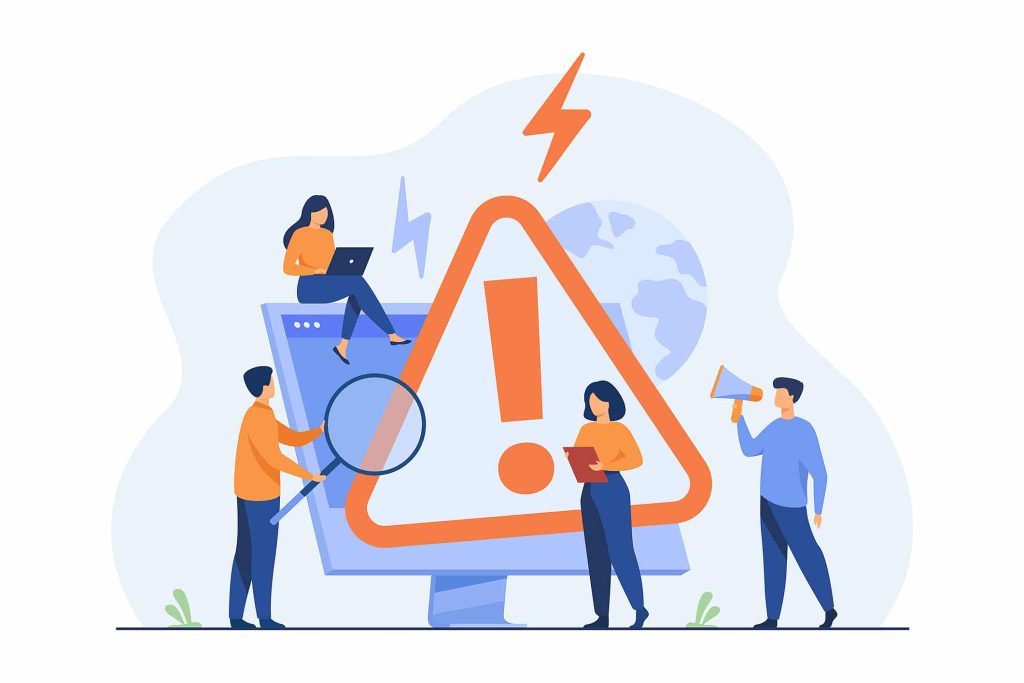.
The privacy error often appears on the screen with the warning that your connection is not private. If this happens, it is very easy to resolve, as it is just a security measure used by browsers that block untrustworthy websites. It is common for this message to appear when pages do not have an SSL security certificate.
There are other situations that lead to the appearance of this warning when the user types an electronic address on the web, for example, the need to log in to the network. In this article, we are going to explain what the privacy error is, why it happens and what are the main options to solve this problem without needing the help of a technician.
Would you like to know more details about privacy error? Keep reading and find out how to solve it!
What is Privacy Error?
Privacy errors, as you can see, is a protection measure used by your browser to prevent access to unsafe websites. It happens if the website’s security certificate is incompatible with the browsing settings or is invalid. This means that the website address may not have https.
The SSL certificate guarantees encrypted or permitted access and prevents redirection to malicious sites. Government pages, in turn, require a login to release content and have additional security factors. Usually the privacy error occurs when the user uses incompatible devices or public wifi.
Why does the privacy error happen?
The privacy error stems from an SSL connection problem that will prevent validation or access to the entered email address. This is because the searched site may have security flaws and allow or steal data from Internet users. Means that the connections are unreliable and that you should avoid accessing the content.
However, the problem may not be with the domain, as the message can also be shown if there are complications with the visitor’s operating system, Wi-Fi network or browser. For example, when the computer’s time and date are out of date or if you have enabled SSL scanning in your antivirus program.
What are the options for resolving this issue?
The privacy error message can appear in any browser used to access the World Wide Web: Opera, Safari, Microsoft Edge, Mozilla Firefox, Google Chrome, among others. The content of the error notice may vary, but there are some ways that it can be applied in all situations. Check out some tips below!
reload the page
Reload the page to do a test, after all, this is a quick action that should be the first step before making other attempts. You can use the F5 key or, if you prefer, close and reopen the browser to see if the site will open. This is the quickest and easiest measure that usually yields good results.
Do not use public wifi
Public networks that allow free Internet access in airports, bars or other commercial establishments may cause the privacy error message to appear for users. The warning is issued because information entered on public networks is not encrypted and could be exposed to malicious third parties.
Clean history
Another alternative to solve the privacy error is to clean the history, cookies and browser cache. The reason for this occurrence is the excess of cookies or cache sections that generate the message. If you are using Google Chrome, for example, click on the 3 dots located at the top right of the screen.
A window will open with several options for you to choose what you want to do. After that, choose the More Tools option and then click on the option Clear Browsing Data. Carefully read what you want to delete from your browser history, such as cached images and files. Be careful not to erase the saved passwords and finish the operation.
try incognito mode
Try opening a browser window in the famous Incognito Mode. This is a good option if you don’t want to clear your history and want to keep the cache of the browser you are using. The option will work if what is causing the privacy error is the cache or the stored cookies. Start by clicking on the 3 dots.
Check device date and time
The error message is displayed if these elements are not configured correctly. The browser uses this data to check the validity of the SSL certificate. The date and time can be indicated in the past or in the future, depending on each case. Fix them and prevent incompatibility issues so the warning goes away.
Scan the antivirus program
It is possible that an Internet security program or an antivirus performs the https lookup. With these features enabled, the appliance blocks network connections or SSL certificates. Turn off the SSL scanning feature or temporarily disable the antivirus. Try reopening the fetched page and, if that works, reactivate the disabled program.
Disable your VPN
Temporarily disable your virtual private network or VPN which performs encryption and redirection of World Wide Web connection through remote server. It increases anonymity on the Internet, hides the IP address and offers additional layers of security that block certain SSL certificates causing the privacy error.
Access the Site via Proxy
Proxy is similar to VPN in terms of its ability to redirect the Internet connection to a remote server. It does not perform encryption and must be configured in all applications. The solution will help verify that the site can be accessed through another network. Use one of the free services: Hide.me or Hidester.
reset the router
This is the most practical way to try to solve the privacy error that suddenly appears before doing an analysis. Restart your router and many connection issues will automatically be resolved. This equipment has its own CPU, operating system, memory and may experience bugs due to overheating. Restarting it gives you a chance to update it immediately.
Do you understand how to resolve the privacy error? Know that SSL directly influences the connection as it is a technology created specifically to prevent data and information theft. This certificate is essential to keep your information safe and free from espionage that is practiced by hackers and criminal organizations.
Want to learn a little more? Read on and find out how to build a website fast with tips on top performance-impacting issues!
.









